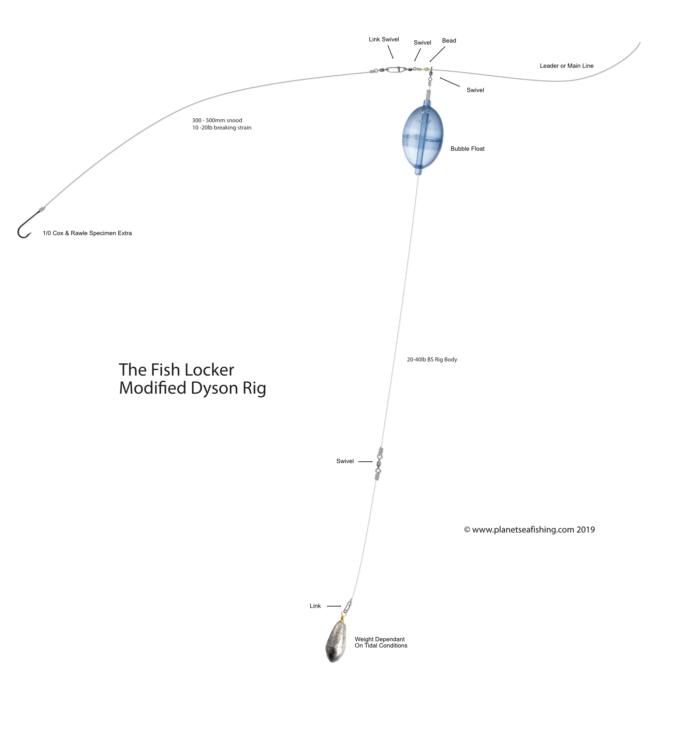A Specialised Rig To Suspend Hook Baits
The Dyson rig, named after specialist eel angler the late Colin Dyson, is used by freshwater anglers targeting eels in particular as well as other predators.
John of The Fish Locker’s version is adapted to have the hook length after the bubble float rather than suspended between the float and the rod tip.
A rotten bottom can be used below the rig body lower swivel when fishing over rough ground.
A dropper can also be added to the hook length as in The Fish Locker video.
The bubble float should be filled with enough water to ensure that the lead stays in almost constant contact with the seabed but remains buoyant.
As can be seen in the video a dropper can be added to the hook length.
Shore anglers can adapt the rig by omitting the end hook length and attaching droppers between the float and the rod tip.
Dyson Rig Components
Main Body
2 x Swivel
1 x 5mm Bead
1 x Cross Link Swivel
1 x Bubble Float
1 x Lead Link
Approx 1 to 1.5 metre length 20-40lb BS drop line
Snood
1 x 300 to 500 mm length 10 – 20lb BS monofilament or fluorocarbon snood
1 x 2 to 2/0 hook, John likes the Cox & Rawle Specimen Extra or Chinu hooks
The Rig Body
- Tie a link swivel to the end of the leader.
- Slide on a bead, followed by swivel. If tying the rig in advance the leader length should include a swivel at the rod end.
- Tie the drop line to the free end of the swivel.
- Thread on the bubble float.
- If using a rottten botton attach a swivel to the bottom of the drop line then add the length of weaker line.
- Tie on a lead link.
Steps 3 to 6 can be done in advance with the leader threaded through the top swivel at the venue.
Snood
- Tie the hook to one end of the snood length.
- Tie a swivel to the free end of the snood.
- Attach the swivel to the link swivel.
Click on image for larger version
You can watch the video where John shows the modified Dyson rig in use.
There are numerous sources of terminal tackle both locally and on-line, here are a few suggestions –

